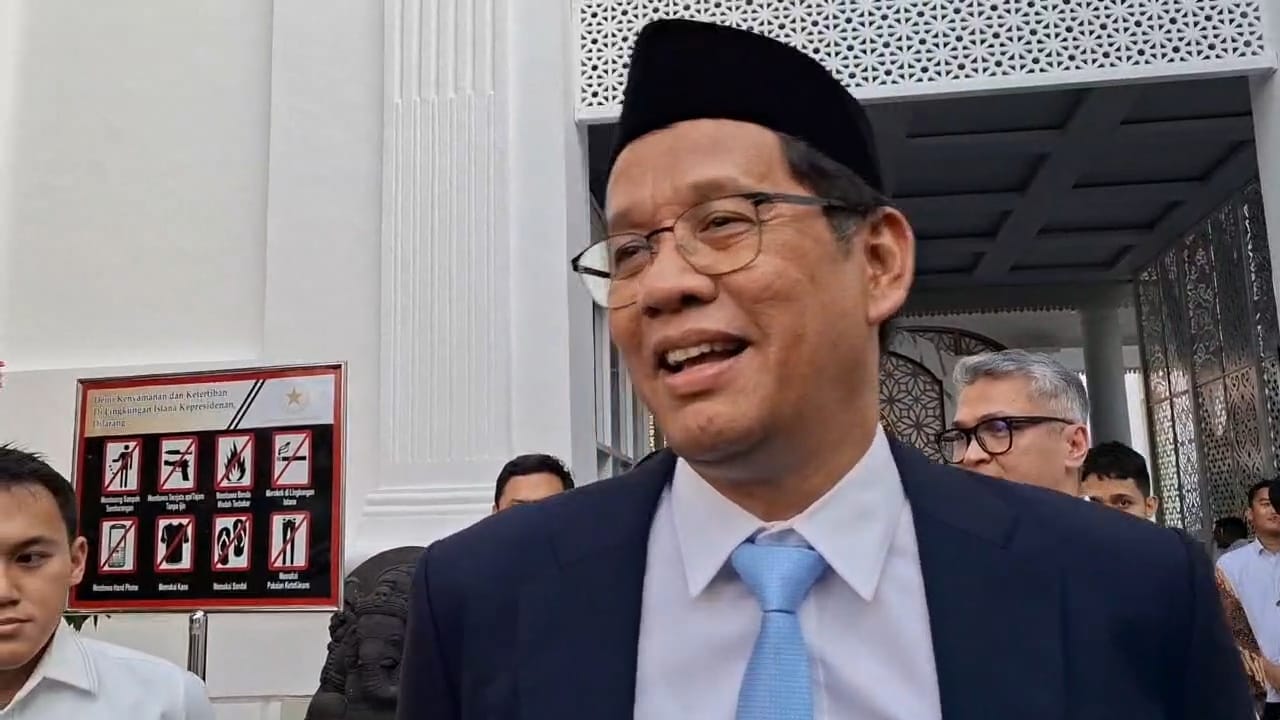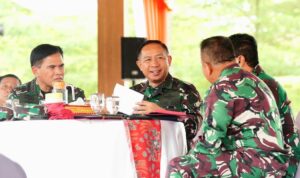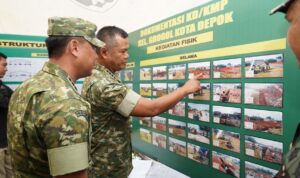Support by SAMUDRA PELAUT TRUST DESA
The global economy is entering a new and uncertain era. The age of unrestrained globalization has fractured. The United States and its allies are building new technological and financial blocs to contain China’s rise, while Beijing is tightening its state-led, securitized industrial policy under its 15th Five-Year Plan. Europe, meanwhile, struggles to maintain its industrial autonomy amid shifting energy and political dependencies. Southeast Asia has become the frontline of this economic contest, where global supply chains and investments double as tools of geopolitical influence.
In this environment, Indonesia can no longer afford to remain a passive observer. The country must choose whether to remain a supplier of raw materials and a consumer market for foreign goods or to rise as an autonomous producer capable of shaping its own economic rhythm. That answer is emerging through a new national framework known as the “Purbaya Economic Fortress.”
Coined after Finance Minister Purbaya Yudhi Sadewa, this concept represents a balance between fiscal discipline, industrial sovereignty, and pragmatic nationalism. Under President Prabowo Subianto, this “fortress” serves not merely as a fiscal doctrine but as a comprehensive strategy for economic defense—an integration of industrial policy, macroeconomic prudence, and geopolitical statecraft. Together, Prabowo and Purbaya form a dual leadership model: the former anchoring strategic diplomacy and national security, the latter ensuring that every ambition remains grounded in sound fiscal and economic logic.
Purbaya’s Economic Realism: From Thrifting Crackdown to the Whoosh Audit
In recent months, Minister Purbaya’s assertive policies have signaled a decisive shift in Indonesia’s economic direction. He cracked down on the booming import of second-hand clothing (thrifting), which for years has undermined the domestic textile industry, drained foreign reserves, and displaced formal-sector jobs. What seems a minor trade issue is, in fact, a symbolic economic stance: Indonesia will no longer serve as the dumping ground for the world’s consumption waste. The policy marks a return to real production — to the dignity of manufacturing and industrial work.
Simultaneously, Purbaya has called for a full audit of the Jakarta–Bandung “Whoosh” high-speed rail project, scrutinizing its financing, debt structure, and contractual transparency. The message is unequivocal: national infrastructure cannot be a vanity project or political trophy; it must serve the country’s long-term economic logic. Both moves embody a new phase of economic statecraft — one that defends fiscal integrity while redefining sovereignty as the ability to say noto bad economics, even when it is politically inconvenient.
The Fiscal Core of the Fortress
Indonesia’s economic fortress is built on a foundation of fiscal restraint and adaptive flexibility. By keeping the fiscal deficit below 3 percent of GDP and public debt under 40 percent, the country remains one of the few emerging markets with credible fiscal space. On this foundation, Purbaya has introduced two institutional innovations: the Strategic Investment Vehicle (SIV) and the Stabilization and Resilience Facility (SRF).
The SIV acts as a blended-finance platform for strategic industries such as electric batteries, petrochemicals, and electronics, mobilizing private and sovereign wealth funds without overburdening the state budget. The SRF, on the other hand, serves as a liquidity shield to defend the currency, stabilize critical firms, and prevent financial contagion during global shocks. Stress simulations suggest that the SRF could halve the impact of a major capital outflow on the rupiah compared to a scenario without such a buffer. These mechanisms show that fiscal discipline in Indonesia is not passive austerity but a proactive form of resilience-building.
From Resource Exporter to Industrial Power
Yet fiscal credibility alone cannot define national strength. Purbaya recognizes that in the modern economy, resilience derives from industrial depth and technological capability. His industrial strategy goes beyond resource processing: it seeks to push Indonesia up the global value chain through the creation of trusted industrial zones—manufacturing hubs with world-class logistics, digital infrastructure, and data security. These zones are designed to attract friendshoringinvestments from global firms seeking diversification away from China.
The model combines performance-based tax incentives, simplified logistics, and clear legal protections for investors. If implemented with transparency and consistency, Indonesia could emerge as a neutral manufacturing hub in the Indo-Pacific—trusted by both Western and Eastern partners. It is, in essence, a reimagining of Indonesia’s development model: not isolationist, but strategically independent.
Prabowo’s Geopolitical Dimension
President Prabowo’s leadership adds a decisive geopolitical layer to this architecture. With his defense background and extensive diplomatic network, he frames economics as an extension of national defense. The concept of economic defense capability broadens the definition of security: fiscal stability, energy independence, and industrial sovereignty are as critical as military strength.
Prabowo’s foreign policy pragmatism complements Purbaya’s fiscal rigor. While Prabowo cultivates relations with the U.S., Japan, and the European Union to secure technological and financial access, he also maintains cooperation with China and the Middle East through energy and infrastructure partnerships. This balancing act turns Indonesia into a geoeconomic balancer — a nation that engages all blocs without being captured by any.
Three Global Scenarios and Indonesia’s Strategic Options
Between 2026 and 2030, Indonesia’s trajectory will be shaped by three plausible global scenarios. In the managed-competition scenario — the most likely — the U.S.-China rivalry continues without escalation into open confrontation. Indonesia thrives as a neutral partner, attracting quality FDI and maintaining 5.5–6 percent growth. The Purbaya Fortress functions optimally: fiscal buffers hold, supply chains stabilize, and investor confidence deepens.
In the fragmentation scenario, global tensions escalate into full technological and trade separation. Supply chains rupture, commodity exports fall, and capital inflows weaken. Here, the Purbaya framework serves as a shock absorber, cushioning the economy for 9–12 months through reserves and fiscal discipline, while Prabowo’s diplomatic skills are tested to maintain neutrality and prevent economic isolation.
In a limited-cooperation scenario, where major powers pivot toward climate cooperation and green industrial investment, Indonesia could position itself as a regional energy-transition hub. The combination of Purbaya’s green fiscal instruments and Prabowo’s diplomatic leadership could make Indonesia central to the Indo-Pacific’s renewable value chain.
From Crony Capitalism to Productive Capitalism
Domestically, Purbaya’s assertive stance against thrifting and the Whoosh project audit sends a strong message to entrenched business elites: the era of easy rents is over. This has stirred unease among certain oligarchic circles but strengthened public trust in government. By prioritizing industrial health over short-term profit, the finance minister is redefining what political courage means in economic governance.
This shift signals a deeper transformation of Indonesia’s economic elite — from crony capitalism toward productive capitalism. The state is reclaiming its role as the arbiter of fairness and efficiency, not as a vehicle for patronage. In this sense, the Purbaya-Prabowo administration is not merely managing the economy but restructuring its moral foundation.
Challenges and Strategic Imperatives
Still, the fortress remains a work in progress. Its strength will depend on governance integrity and institutional capacity. Both the SIV and SRF must be managed with full transparency to avoid becoming political instruments. Industrial policy must be matched with labor upskilling, research investment, and better logistics infrastructure. Diplomatic agility must not evolve into military overreach; investor confidence depends on economic professionalism, not political command.
The real test will come when global shocks arrive — whether through currency volatility, commodity slumps, or technology wars. In those moments, the resilience of Indonesia’s institutions will determine whether the fortress holds. The goal is not to isolate the economy from the world but to ensure that external turbulence does not dictate the nation’s internal priorities.
A Fortress That Grows, Not Just Defends
The Purbaya Economic Fortress symbolizes a new chapter in Indonesia’s political economy — one that blends fiscal prudence with industrial ambition and strategic neutrality. Under Prabowo’s geopolitical leadership and Purbaya’s fiscal stewardship, Indonesia is building a model of resilience that is pragmatic, disciplined, and quietly assertive.
In a world defined by shocks, the true measure of a nation’s strength is not how loudly it speaks, but how calmly it endures. Indonesia’s challenge is to prove that a developing nation can be both open and sovereign, both fiscally disciplined and socially ambitious. If this balance is maintained, the country will not merely survive global fragmentation — it will rise from it.
Indonesia, through its emerging economic fortress, stands on the threshold of becoming not just a survivor of the 21st-century economic storm, but one of its new architects.








Komentar